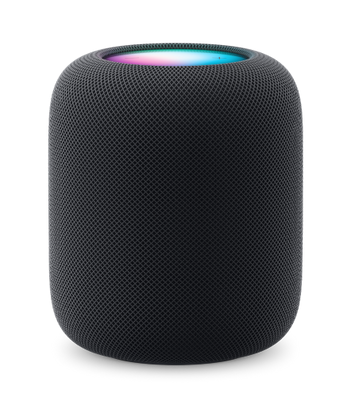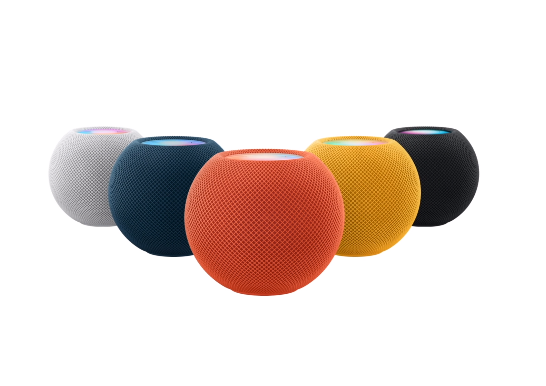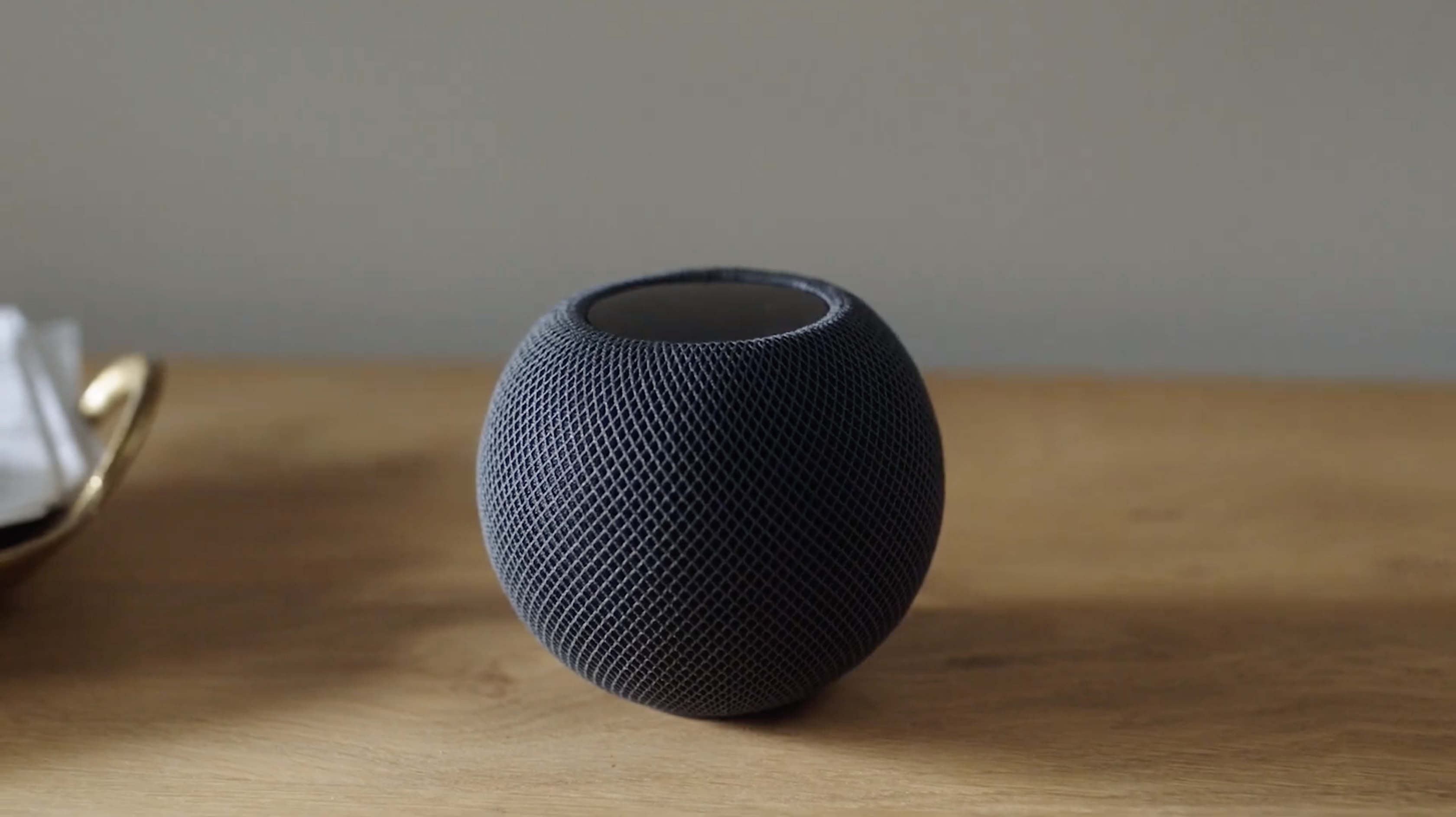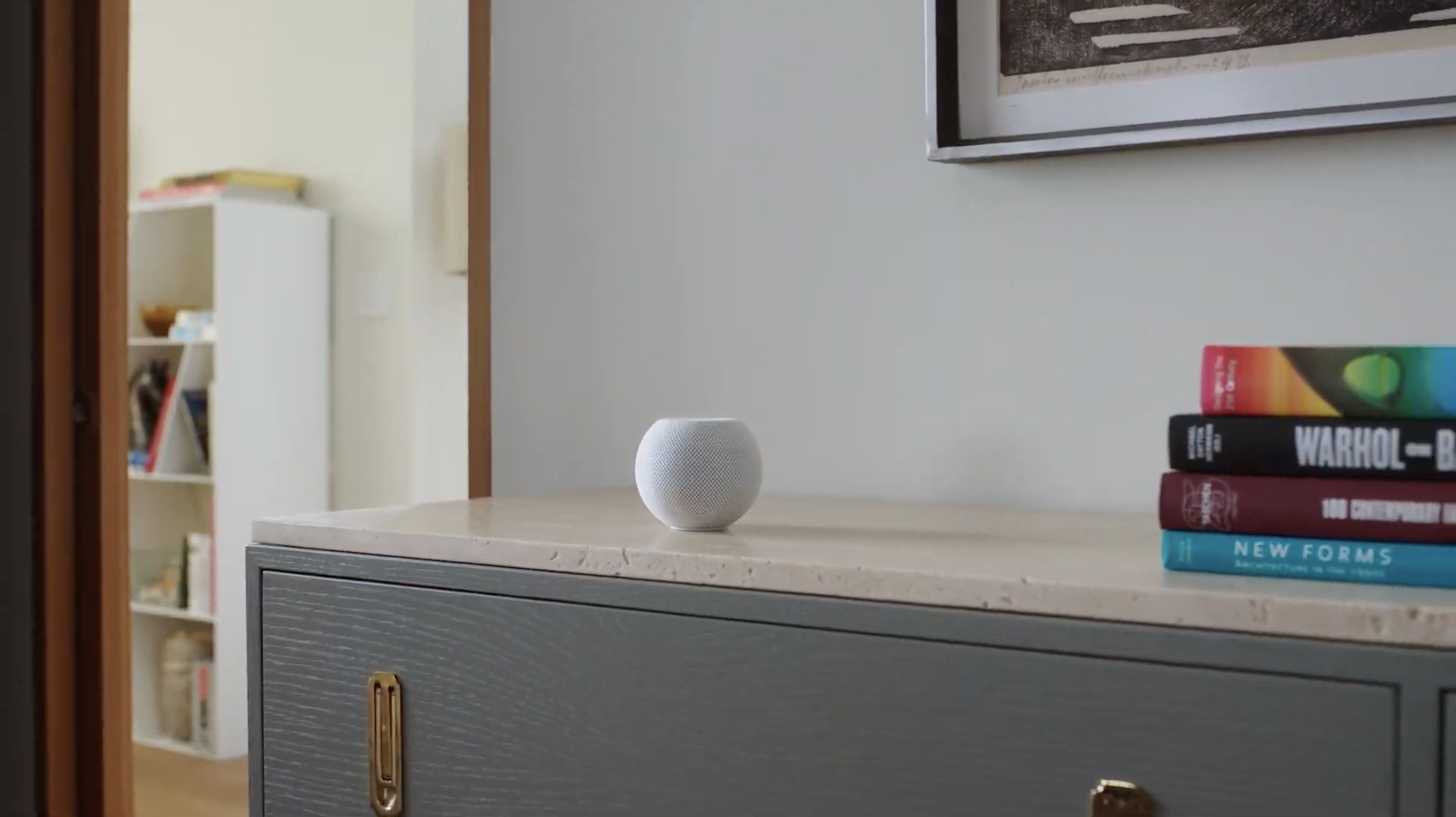HomePod mini vs HomePod (2nd gen): What should you buy?
Can Apple's HomePod mini measure up to Apple's high-end smart speaker? Here's what you need to know

The HomePod mini is priced right at $99, and has many of the same features as the HomePod 2, including support for Matter and as an output for an Apple TV 4K. However, audio isn't nearly as immersive as the larger HomePod.
Pros
- Great audio for size
- Competitive price
- Attractive design
- Comes in multiple color
Cons
- Lacks adaptive audio

The HomePod 2 delivers excellent sound, and can adapt its audio profile automatically to the room it's in. It also supports Matter and has temperature and humidity sensors. However, it's a pricey $299.
Pros
- Great sound quality
- Adaptive audio
Cons
- Expensive
- Only comes in two colors
After a two-year absence, Apple has reintroduced its premium smart speaker in the form of the Apple HomePod (2nd gen). This revamped model has a few new features, including support for Matter and a few other sensors that can measure temperature and humidity.
However, the HomePod 2 costs $299, which is a pricey investment. Fortunately, Apple has a less expensive version in the HomePod mini, which costs just $99, yet has many of the same features. So, should you get the HomePod 2 or the HomePod mini? This comparison will help you choose which of these smart speakers is best for your home.
HomePod mini vs HomePod: Price and availability

Like the original HomePod, the HomePod (2nd gen) costs $299, which makes it more expensive than competing smart speakers, such as the Sonos One ($219) and the Amazon Echo Studio ($199).
The HomePod mini comes with a mini price tag, at least in comparison to the HomePod. At $99 it’s a third of the price of the HomePod 2. That price puts the HomePod mini in the ballpark of Google’s Nest Audio as well as the Amazon Echo, which happens to also have spherical design like the HomePod mini (but a bit larger).
The HomePod 2 is available in white or black, while the mini comes in a variety of colors: gray, blue, white, yellow, and orange.
Apple HomePod mini vs. HomePod 2: Specs
| HomePod mini | HomePod 2 | |
| Price | $99 | $299 |
| Size | 3.3 inches (height); 3.9 inches (diameter) | 6.6 inches (height); 5.6 inches (diameter) |
| Speakers | One full-range driver | One woofer, five tweeters |
| Microphones | 4 | 4 |
| Audio beamforming | No | Yes |
| Wireless | 802.11n Wi-Fi, Bluetooth 5.0, Thread | 802.11n, Bluetooth 5.0, Thread |
HomePod mini vs HomePod 2: Design

At 3.3 inches tall, the HomePod mini is under half the size of the 6.6-inch tall HomePod 2. It’s also significantly smaller overall, likely making it a device that will sit nicely on a small desk, rather than need a sizable shelf like the HomePod.
And while the HomePod 2 looks a bit like the cross between a Sonos One speaker and the high-end trash can look of the old Mac Pro, the HomePod mini sports a design that’s more in line with Google and Amazon’s smart home products.
Get instant access to breaking news, the hottest reviews, great deals and helpful tips.
Looking a bit like a fabric-covered Magic 8 ball—and in some ways like an upside down Echo speaker—the HomePod mini has a rather neat and clean aesthetic.
The small touchscreen on the top of the HomePod mini and the design and color (white or Space Grey) of its fabric covering echoes some of the design cues of the original HomePod. But otherwise the two speakers look rather different.
Beauty is in the eye of the beholder, so which speaker tickles your interior design glands will be a matter of personal taste.
HomePod mini vs HomePod 2: Sound

With only a single full-range driver and dual passive radiators, as well as two tweeters, the HomePod mini has less physical audio tech than the original HomePod, with its high-excursion woofer with custom amplifier and seven tweeters.
With its ability to configure its sound output to the room it’s in using its audio beamforming tech, the HomePod 2 has a pretty neat feature to ensure you get the best sound out of it regardless of when you position it.
The HomePod mini has no such beamforming tech. But it has Apple’s S5 chip that allows it to use computational audio to better balance sound output at different volumes. And its design means it delivers 360-degree sound.
For its size, the HomePod mini sounds great — it sounded better than the larger Amazon Echo, and worlds better than the Amazon Echo Dot, but couldn't compare to the full-size HomePod or the Sonos One, which were just better all-around.
HomePod mini vs HomePod 2: Features

The HomePod 2 has a four-microphone array for picking up commands barked at Siri. The HomePod mini also has four microphones, but there was no difference in Siri's responsiveness.
Both speakers support a range of streaming services from Apple Music, iHeartRadio, Pandora, Prime Music and others. Spotify is still absent from the mix, which is disappointing. But on the software side, the HomePod and its mini sibling are on a par with each other.
You can also use both speakers as an audio-out for the Apple TV 4K, a nice way that Apple integrates everything into its ecosystem. However, only the HomePod 2 supports Dolby Atmos, which gives the bigger speaker spatial audio.
Another great feature of both speakers is the ability to hand off music playing on your iPhones without relying on Bluetooth pairing. It also works on reverse, meaning as you head out you can pass your iPhone by the HomePod mini and the audio playback will get picked up by the Apple phone.
HomePod mini vs HomePod 2: Smart home
Both the HomePod (2nd gen) and the HomePod mini support Thread and Matter, a new smart home networking protocol which lets you connect low-power devices such as smart locks and smart lights. There are relatively few Matter-enabled smart home devices now, but their number should grow in the future.
Also, both devices have temperature and humidity sensors built in, so that you can ask Siri for the temperature in the room. More importantly, you'll also be able to connect these sensors to HomeKit routines, so that if it gets too hot, it can automatically turn on a connected fan or air conditioner.
Coming later this spring is a sound recognition feature; this can listen for a smoke or carbon monoxide alarm, and send you an alert.
HomePod mini vs HomePod (2nd gen): Verdict

Not surprisingly, the HomePod mini can't deliver the audio quality that the larger HomePod (2nd gen) can. However, it's very good for its size, and at $99, the HomePod mini feels more like a device that iPhone users will lap up as it doesn’t require the level of investment the larger HomePod does.
Audio enthusiasts might still prefer the HomePod 2. But even then, the HomePod mini could be a second room Apple smart speaker. And with the handoff feature, we can see the HomePod mini fitting seamlessly into an Apple-centric smart home setup.

Michael A. Prospero is the U.S. Editor-in-Chief for Tom’s Guide. He oversees all evergreen content and oversees the Homes, Smart Home, and Fitness/Wearables categories for the site. In his spare time, he also tests out the latest drones, electric scooters, and smart home gadgets, such as video doorbells. Before his tenure at Tom's Guide, he was the Reviews Editor for Laptop Magazine, a reporter at Fast Company, the Times of Trenton, and, many eons back, an intern at George magazine. He received his undergraduate degree from Boston College, where he worked on the campus newspaper The Heights, and then attended the Columbia University school of Journalism. When he’s not testing out the latest running watch, electric scooter, or skiing or training for a marathon, he’s probably using the latest sous vide machine, smoker, or pizza oven, to the delight — or chagrin — of his family.
